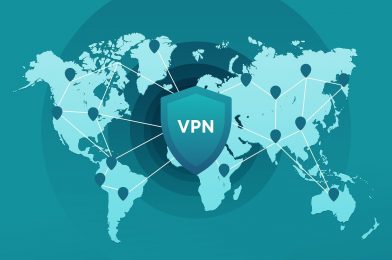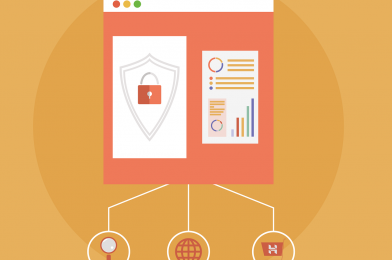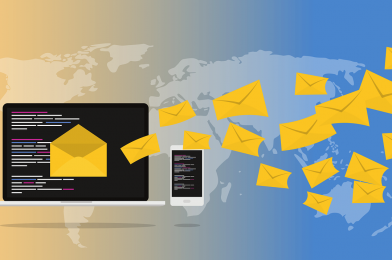How to Create a Free Privacy Policy for Your Website
Introduction
In the digital age, ensuring the privacy and security of your website visitors is paramount. A privacy policy is not just a formal document; it’s a critical component that builds trust and ensures compliance with legal standards. Whether you’re running a blog, an e-commerce store, or a corporate website, having a transparent, comprehensive privacy policy is indispensable.
Creating a privacy policy for your website free of charge is entirely possible, thanks to various online tools and resources. In this article, we’ll guide you through the importance of having a privacy policy, introduce you to top free privacy policy generators, and provide a detailed step-by-step guide to implementing a privacy policy tailored to your website’s specific needs.
Why Every Website Needs a Privacy Policy
Before diving into how to create a free privacy policy, it’s essential to understand why your website absolutely needs one. From legal compliance with regulations like GDPR and CCPA to fostering trust among your audience, a privacy policy serves multiple crucial functions.
Why Every Website Needs a Privacy Policy
Importance of a Privacy Policy for Websites
In today’s digital age, having a privacy policy for your website is not just a good practice; it’s an essential component of maintaining transparency and trust with your users. A privacy policy outlines how your website collects, uses, and protects users’ personal data. This is not only critical for legal compliance but also for building a trustworthy relationship with your audience.
Online users are becoming increasingly concerned about their data privacy. According to statistics, over 70% of consumers would stop doing business with a company if their sensitive data was improperly handled. By having a clearly defined privacy policy, you reassure your users that their personal information is in safe hands, thereby reducing bounce rates and increasing user retention on your site.
Legal Requirements and Compliance (GDPR, CCPA, etc.)
Websites need to abide by various data protection laws, and failing to do so can result in hefty fines and legal repercussions. Notable regulations include the General Data Protection Regulation (GDPR) in Europe and the California Consumer Privacy Act (CCPA) in the United States. These laws have strict requirements about how businesses should handle personal data, making a privacy policy indispensable.
The GDPR, for example, mandates that websites explicitly inform users about data collection practices and obtain their consent before gathering any personal information. The CCPA, on the other hand, grants Californian residents specific rights regarding their personal data, including the right to know what data is being collected and the right to delete it. By having a privacy policy, you make it easier to comply with these regulations and avoid legal issues.
Building Trust with Your Audience
One of the key benefits of having a privacy policy for your website is the trust it fosters with your audience. When users visit your website, they need to feel confident that their personal information will not be misused. A well-crafted privacy policy serves as a declaration of your commitment to protecting their data, which can significantly enhance your site’s credibility.
Transparency is a cornerstone of trust. When users see that you have a detailed privacy policy, they are more likely to engage with your content, make purchases, and share their personal information with you. This trust can translate into long-term loyalty, positive reviews, and higher conversion rates for your website.
In conclusion, having a privacy policy is not just a legal requirement but a best practice for any website that wants to operate ethically and successfully. It helps you meet legal requirements, protects your business from potential fines, and builds a foundation of trust with your users. In the next sections, we will delve into how you can generate a free privacy policy for your website and ensure it is effectively implemented and maintained.
Top Resources to Generate a Free Privacy Policy for Your Website
Creating a privacy policy for your website can seem like a daunting task, especially if you’re not familiar with legal jargon or regulatory requirements. Fortunately, there are several free resources available to help you generate a comprehensive privacy policy tailored to your needs. In this section, we will explore some of the top free privacy policy generators available online and provide detailed reviews of their features, benefits, and drawbacks.
Overview of Free Privacy Policy Generators
Free privacy policy generators are online tools that assist website owners in creating customized privacy policies without the need for legal expertise. These tools typically guide you through a series of questions about your website’s data collection and use practices, and then generate a privacy policy based on your responses. Some popular free privacy policy generators include:
- FreePrivacyPolicy.com
- PrivacyPolicies.com
- Shopify’s Free Policy Generator
Detailed Reviews of Popular Free Privacy Policy Generators
FreePrivacyPolicy.com
FreePrivacyPolicy.com is a user-friendly platform that allows users to create a basic privacy policy for free. The website offers a straightforward questionnaire that covers standard privacy concerns, such as data collection, use, and sharing practices. Once you complete the questionnaire, you can generate a downloadable privacy policy document that you can easily add to your website.
Pros:
- Simple and easy-to-use interface.
- Free basic privacy policy generation.
- Customizable options available for specific needs.
Cons:
- Limited customization in the free version.
- More advanced features and templates require a paid subscription.
PrivacyPolicies.com
PrivacyPolicies.com is another excellent resource for generating a free privacy policy. The website offers a comprehensive questionnaire that covers a wide range of privacy-related topics, ensuring that your privacy policy is thorough and legally compliant. The free version provides a basic privacy policy, while the premium version offers additional customization and compliance options.
Pros:
- Detailed and thorough questionnaire.
- Free version covers essential privacy policy elements.
- Options for additional compliance features and customization.
Cons:
- Some advanced features are behind a paywall.
- The comprehensive questionnaire may be time-consuming for some users.
Shopify’s Free Policy Generator
Shopify’s Free Policy Generator is designed primarily for e-commerce websites but can be adapted for various types of online businesses. This tool provides a straightforward and easy-to-follow process for generating a privacy policy. Shopify ensures that the generated privacy policy complies with common regulations, making it a reliable option for online store owners.
Pros:
- Tailored specifically for e-commerce websites.
- Easy integration with Shopify stores.
- Free to use with high-quality compliance standards.
Cons:
- May not be as comprehensive for non-e-commerce websites.
- Fewer options for advanced customization compared to other generators.
Pros and Cons of Using Free Privacy Policy Generators
While free privacy policy generators offer a convenient and cost-effective solution for website owners, it’s important to consider both the benefits and potential drawbacks.
Pros:
- Cost-effective: Free privacy policy generators save you money by providing essential privacy policy features without a fee.
- Ease of Use: These tools are typically user-friendly and do not require legal expertise to generate a privacy policy.
- Comprehensive Guidance: Many generators offer detailed questionnaires that help ensure your policy covers all necessary elements.
Cons:
- Limited Customization: Free versions may not allow for extensive customization, which can be a drawback if your website has unique privacy needs.
- Advanced Features Require Payment: Some additional features or compliance options might only be available in paid versions or subscriptions.
- Potential for Incomplete Coverage: Free tools might not provide the most up-to-date or comprehensive legal coverage compared to policies drafted by professional legal services.
In conclusion, free privacy policy generators are valuable tools that can help you create a functional and compliant privacy policy for your website. By understanding the strengths and limitations of these resources, you can choose the best generator to meet your specific needs and ensure that your website adheres to necessary privacy standards.
Step-by-Step Guide to Implementing Your Free Privacy Policy
Gathering Necessary Information for Your Privacy Policy
Before you can create and implement a privacy policy for your website for free, it’s crucial to gather all necessary information that will be included in the document. A privacy policy should cover several key areas to ensure comprehensive protection and transparency. Here’s what you need to gather:
- Personal Information Collected: Identify the various types of personal information you collect from your users, such as name, email address, phone number, and payment information.
- Methods of Data Collection: Note the methods by which you collect this data, whether it be through forms, cookies, or other tracking technologies.
- Purpose of Data Collection: Clearly state why you are collecting personal data. For example, it could be for account registration, service improvement, marketing, or customer communication.
- Data Sharing and Disclosure: Specify if you share personal data with third parties and under what circumstances, such as analytics services or advertising partners.
- Data Security Measures: Describe the security measures you have in place to protect user data from unauthorized access, modification, or disclosure.
- User Rights: Outline the rights users have in terms of accessing, modifying, and deleting their personal information.
Customizing Your Privacy Policy to Suit Your Website’s Needs
Using a privacy policy generator can spare you from the hassle of drafting a policy from scratch. However, it’s essential to customize the generated policy to accurately reflect your website’s specific practices and requirements. Follow these steps to ensure your privacy policy is tailored to your needs:
- Choose a Reliable Generator: Select a reputable privacy policy generator, such as FreePrivacyPolicy.com or PrivacyPolicies.com. Input the basic data they request.
- Detailed Customization: Carefully go through the sections of the generated privacy policy. Modify any templated language to include specific details relevant to your site. For instance:
- Update the sections on data collection to reflect all personal information you collect.
- Ensure the explanation of how you use collected data is precise and covers all bases.
- Adjust the disclosures section to accurately describe your current partnerships or third-party services you use.
- Legal Compliance: Check that your privacy policy complies with relevant data protection laws like GDPR, CCPA, and others. This might require adding or modifying specific clauses.
- Consult a Professional: If possible, have a legal expert review your customized privacy policy to ensure it is watertight and fully compliant with applicable laws.
How to Add Your Privacy Policy to Your Website
Once you have a customized and legally compliant privacy policy, the next step is to add it to your website. This process may vary slightly depending on the platform you’re using:
For WordPress:
- Create a New Page: Log into your WordPress dashboard. Navigate to Pages and click Add New.
- Publish Your Privacy Policy: Enter a title, such as “Privacy Policy,” and paste the text of your policy into the content area. Click Publish.
- Add to Footer: Go to Appearance > Widgets. Add a text widget to your footer section and include a link to your newly created Privacy Policy page.
For Shopify:
- Create a Legal Page: From your Shopify admin, go to Settings > Legal.
- Publish Your Policy: Paste your privacy policy text into the Privacy policy text box and click Save.
- Add to Footer: Navigate to Online store > Navigation. Under Footer menu, click Add menu item, name it “Privacy Policy,” and link it to your policy page.
For Custom HTML Websites:
- Create a Privacy Policy Page: Create a new HTML page on your server, titled “privacy-policy.html.”
- Insert Policy Text: Paste your customized privacy policy into the HTML file within appropriate HTML tags like <p> and <div> for better formatting.
- Link from Homepage: Ensure there’s a hyperlinked text or button on your homepage footer that links to the privacy policy page, ensuring easy access for your users.
Regularly Updating Your Privacy Policy to Maintain Compliance
A static privacy policy can quickly become outdated, especially with evolving data privacy laws and changing website practices. Regular updates are crucial to maintain compliance and uphold user trust.
Here’s a periodic process to keep your privacy policy up to date:
- Stay Informed: Regularly monitor updates in data privacy laws like GDPR, CCPA, and other regional regulations. Many legal blogs and newsletters can help you stay informed.
- Review Annually: Set a recurring annual reminder to review and update your privacy policy. During the review, ensure all data collection methods, purposes, and third-party sharing practices are still accurately reflected.
- Amend as You Grow: If you introduce new features or services on your website that involve additional user data collection, update your privacy policy accordingly. This applies to partnerships with new third-party services as well.
- Communicate Updates: When substantial changes are made to your privacy policy, communicate these updates to your users. A notification banner or an email update can go a long way in maintaining transparency and trust.
Conclusion
Creating a privacy policy for your website is not just a legal formality but a crucial step in building a secure and trustworthy online presence. As we have outlined, every website needs a privacy policy to comply with regulations like GDPR, CCPA, and to show your commitment to protecting users’ data. By using free privacy policy generators, you can easily create a compliant and effective policy without incurring additional costs.
We reviewed several popular free privacy policy generators, such as FreePrivacyPolicy.com, PrivacyPolicies.com, and Shopify’s Free Policy Generator, comparing their features, ease of use, and flexibility. Each tool has its pros and cons, and the best choice will depend on your specific needs and technical proficiency.
Implementing the privacy policy on your website is straightforward but requires careful attention. Collecting the necessary information, tailoring the policy to fit your site, and ensuring it is updated regularly are all part of the process. Whether you are using platforms like WordPress, Shopify, or another CMS, most provide simple ways to add and update your privacy policy page efficiently.
In summary, having a privacy policy on your website is essential for compliance, transparency, and gaining users’ trust. With the help of free resources and generators, you can create a privacy policy that meets legal standards and reflects your commitment to safeguarding user information. Regularly updating your policy ensures you remain compliant as regulations evolve.










 At the end of July, Mozilla announced it would remove the built-in RSS reader from the Firefox browser. Of all things, a company that has always seen itself as a supporter of the free, decentralized web is saying goodbye to a format that stands for the open web like no other. What sounds like a nail in the coffin and was probably also the reason for Scherschel’s swan song is not a reason for panic on closer inspection. 99.9 percent of Firefox users would never have used this function anyway, writes tech blogger Martin.
At the end of July, Mozilla announced it would remove the built-in RSS reader from the Firefox browser. Of all things, a company that has always seen itself as a supporter of the free, decentralized web is saying goodbye to a format that stands for the open web like no other. What sounds like a nail in the coffin and was probably also the reason for Scherschel’s swan song is not a reason for panic on closer inspection. 99.9 percent of Firefox users would never have used this function anyway, writes tech blogger Martin.



